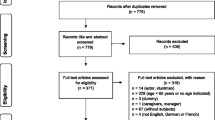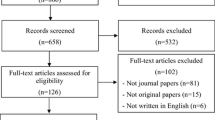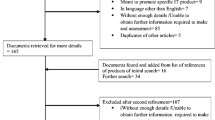Abstract
Fall risk and fall-related injuries increase with age. With an aging population, we need to have a better understanding of what solutions can help us cope with age-related falls. Ambient and ubiquitous fall technologies engage a large research community. We wanted to map research that has been done, technology that is developed and/or applied, current major research topics, and the current knowledge gaps. We employed the systematic mapping study approach. We searched systematically for available literature where modern ICT was developed or applied. A total of 1017 relevant abstracts were analyzed based on a number of criteria such as type of intervention (e.g., fall detection), type of technology (e.g., accelerometers), type of research contributions (e.g., proof of concepts, field trial results), focus of the solution (e.g., accuracy, privacy) etc. Our findings show that existing research is largely in a proof-of-concept phase. A large variety of technology is used. Component requirements are in focus, while system requirements related to real-world deployment are seldom addressed. The focus is on monitoring and data collection, while systems for empowering users are less frequent. Fall detection is by far the largest intervention type, while preventive interventions are less frequent. We have four recommendations based on our findings: (1) more research is needed to develop ICT-based preventive and corrective interventions; (2) more research is needed to develop ICT for empowering users; (3) more research is needed to integrate component technologies into future deployable service models; and (4) more research is needed to evaluate solutions in real-world settings.
















Similar content being viewed by others
References
World Health Organization (2007) WHO global report on falls prevention in older age. http://www.who.int
Kenny RA, Romero-Ortuno R, Cogan L (2013) Falls. Medicine (Baltimore) 41:155–159. doi:10.1016/j.mpmed.2012.12.007
Lofthus C, Osnes E, Falch J et al (2001) Epidemiology of hip fractures in Oslo, Norway. Bone 29:413–418. doi:10.1016/S8756-3282(01)00603-2
Lozano R, Naghavi M, Foreman K et al (2012) Global and regional mortality from 235 causes of death for 20 age groups in 1990 and 2010: a systematic analysis for the Global Burden of Disease Study 2010. Lancet 380:2095–2128. doi:10.1016/S0140-6736(12)61728-0
van den Broek G, Cavallo F, Odetti L, Wehrmann C (2010) Ambient assisted living roadmap. IOS Press, Amsterdam
Weiser M (1991) The computer for the 21st century. Sci Am 265:94–104. doi:10.1038/scientificamerican0991-94
Dourish P (2001) Where the action is: the foundations of embodied interaction. MIT Press, Cambridge
Petersen K, Feldt R, Mujtaba S, Mattsson M (2008) Systematic mapping studies in software engineering. In: EASE’08 Proceedings of 12th international conference on evaluation and assessment in software engineering. British Computer Society, pp 68–77
Kitchenham BA, Budgen D, Pearl Brereton O (2011) Using mapping studies as the basis for further research—a participant-observer case study. Inf Softw Technol 53:638–651. doi:10.1016/j.infsof.2010.12.011
Kitchenham B, Charters S (2007) Guidelines for performing systematic literature reviews in software engineering. EBSE Technical Report Nr. EBSE-2007-01. Keele, UK
Clapton J, Rutter D, Sharif N (2009) SCIE systematic mapping guidance. Social care institute for excellence
Lavis J, Davies H, Oxman A et al (2005) Towards systematic reviews that inform health care management and policy-making. J Health Serv Res Policy 10(Suppl 1):35–48. doi:10.1258/1355819054308549
Howcroft J, Kofman J, Lemaire ED (2013) Review of fall risk assessment in geriatric populations using inertial sensors. J Neuroeng Rehabil 10:91. doi:10.1186/1743-0003-10-91
Kosse NM, Brands K, Bauer JM et al (2013) Sensor technologies aiming at fall prevention in institutionalized old adults: a synthesis of current knowledge. Int J Med Inform 82:743–752. doi:10.1016/j.ijmedinf.2013.06.001
Schwickert L, Becker C, Lindemann U et al (2013) Fall detection with body-worn sensors : a systematic review. Z Gerontol Geriatr 46:706–719. doi:10.1007/s00391-013-0559-8
De Bruin ED, Hartmann A, Uebelhart D et al (2008) Wearable systems for monitoring mobility-related activities in older people: a systematic review. Clin Rehabil 22:878–895. doi:10.1177/0269215508090675
Van Diest M, Lamoth CJC, Stegenga J et al (2013) Exergaming for balance training of elderly: state of the art and future developments. J Neuroeng Rehabil 10:101. doi:10.1186/1743-0003-10-101
Ward G, Holliday N, Fielden S, Williams S (2012) Fall detectors: a review of the literature. J Assist Technol 6:202–215. doi:10.1108/17549451211261326
Hawley-Hague H, Boulton E, Hall A et al (2014) Older adults’ perceptions of technologies aimed at falls prevention, detection or monitoring: a systematic review. Int J Med Inf 83:416–426. doi:10.1016/j.ijmedinf.2014.03.002
Kitchenham BA, Pearl Brereton O, Owen S et al (2008) Length and readability of structured software engineering abstracts. IET Softw 2:37. doi:10.1049/iet-sen:20070044
Brown CJ, Flood KL (2013) Mobility limitation in the older patient: a clinical review. JAMA 310:1168–1177. doi:10.1001/jama.2013.276566
Ketcham CJ, Stelmach GE (2004) Movement control in the older adult. In: Technology for adaptive aging. The National Academies Press, Washington DC, pp 64–92
Schultz AB (1992) Mobility impairment in the elderly: challenges for biomechanics research. Biomechanics 25:519–528
Verwey WB (2010) Diminished motor skill development in elderly: indications for limited motor chunk use. Acta Psychol (Amst) 134:206–214. doi:10.1016/j.actpsy.2010.02.001
Ketcham CJ, Stelmach GE (2001) Age-related decline in motor control. In: Handbook of the psychology of aging. pp 313–348
Clegg A, Young J, Iliffe S et al (2013) Frailty in elderly people. Lancet 381:752–762. doi:10.1016/S0140-6736(12)62167-9
Ensrud KE (2013) Epidemiology of fracture risk with advancing age. J Gerontol A Biol Sci Med Sci 68:1236–1242. doi:10.1093/gerona/glt092
Norwegian Institute of Public Health (2014) Osteoporosis and fractures in Norway—fact sheet. http://www.fhi.no/artikler/?id=74450
Farshchian B, Dahl Y (2015) Included abstracts from systematic mapping study of age-related falls and ICT. doi:10.5281/zenodo.16926
Dahl Y, Holbø K (2012) Value biases of sensor-based assistive technology. In: Proceedings of the designing interactive systems conference—DIS’12. p 572
Almeida O, Zhang M, Liu J-C (2007) Dynamic fall detection and pace measurement in walking sticks. In: High confidence medical devices, software, and systems and medical device plug-and-play interoperability, 2007 (HCMDSS-MDPnP 2007). IEEE, pp 204–206
Wieringa R, Maiden N, Mead N, Rolland C (2005) Requirements engineering paper classification and evaluation criteria: a proposal and a discussion. Requir Eng 11:102–107. doi:10.1007/s00766-005-0021-6
McInnes E, Askie L (2004) Evidence review on older people’s views and experiences of falls prevention strategies. Worldviews Evid Based Nurs 1:20–37. doi:10.1111/j.1741-6787.2004.04013.x
Nyman SR, Yardley L (2009) Web-site-based tailored advice to promote strength and balance training: an experimental evaluation. J Aging Phys Act 17:210–222
Johnston K, Grimmer-Somers K, Sutherland M (2010) Perspectives on use of personal alarms by older fallers. Int J Gen Med 3:231–237
De San Miguel K, Lewin G (2008) Personal emergency alarms: What impact do they have on older people’s lives? Australas J Ageing 27:103–105. doi:10.1111/j.1741-6612.2008.00286.x
The European Commission (2013) Horizon 2020 work programme 2014–2015. https://ec.europa.eu/programmes/horizon2020/
Brownsell S, Hawley MS (2004) Automatic fall detectors and the fear of falling. J Telemed Telecare 10:262–266. doi:10.1258/1357633042026251
Acknowledgments
This research is supported partly by the EU FP7 projects FARSEEING (Grant Agreement No. 288940), OPTET (Grant Agreement No. 317631) and by the Norwegian National Research Council funded project ADAPT. We thank the editors of the special issue and the anonymous reviewers for useful comments to earlier versions of this article.
Author information
Authors and Affiliations
Corresponding author
Rights and permissions
About this article
Cite this article
Farshchian, B.A., Dahl, Y. The role of ICT in addressing the challenges of age-related falls: a research agenda based on a systematic mapping of the literature. Pers Ubiquit Comput 19, 649–666 (2015). https://doi.org/10.1007/s00779-015-0852-1
Received:
Accepted:
Published:
Issue Date:
DOI: https://doi.org/10.1007/s00779-015-0852-1




